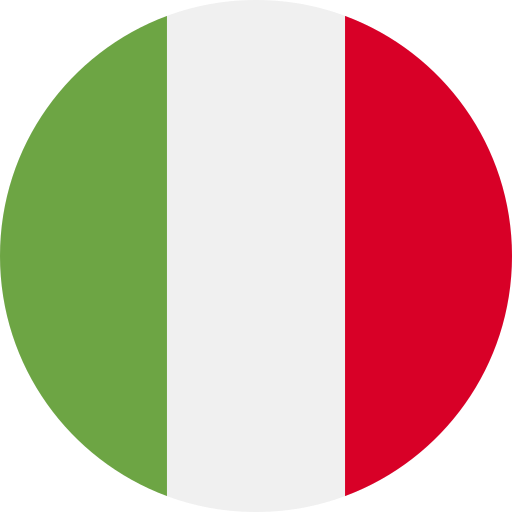Italy’s evolution is a fascinating journey through time, marked by cultural shifts, political upheavals, and artistic revolutions. From the grandeur of the Roman Empire to the Renaissance that sparked innovation in art and science, each era has left an indelible mark on Italy’s identity. I find it intriguing how these historical milestones shape not just the country but also influence global culture.
Overview of Italian Evolution Timeline
Italy’s evolution spans from the ancient civilizations to modern times, reflecting a tapestry of cultural and political transformations. Key periods include:
- Prehistoric Italy (circa 8000 BC – 1000 BC): Early inhabitants practiced agriculture and developed crafting skills.
- Etruscan Civilization (circa 900 BC – 200 BC): This era saw advanced urbanization, trade networks, and unique art forms. The Etruscans influenced Roman culture significantly.
- Roman Empire (27 BC – AD 476): Rome emerged as a dominant power, establishing extensive governance across Europe, North Africa, and parts of Asia. Architecture, law, and language flourished during this time.
- Middle Ages (AD 476 – AD 1300): Following the fall of Rome, feudalism took hold. City-states began forming in Northern Italy, laying groundwork for future economic growth.
- Renaissance (14th century – 17th century): Marked by a revival in arts and sciences; figures like Leonardo da Vinci and Michelangelo epitomized this transformative period. It fostered humanism and innovation that resonated worldwide.
- Unification of Italy (1861): Diverse territories united under one kingdom after centuries of division. This event reshaped national identity and politics.
- World Wars Impact (20th century): Italy experienced significant struggles during both World Wars but emerged with renewed vigor post-war.
These milestones illustrate how historical events shaped contemporary Italian culture, making it an integral part of global heritage.
Key Historical Periods
Italy’s historical evolution encompasses several pivotal periods that shaped its cultural and political landscape. Below are the key eras that define this rich history.
Prehistoric Era
Prehistoric Italy spans from the Paleolithic to the Iron Age, marking the earliest human presence in the region. Archaeological findings indicate habitation as early as 500,000 years ago. Notable sites include caves in southern Italy, where early humans left behind tools and art. The Neolithic Revolution introduced agriculture around 8000 BCE, leading to settled communities and advancements in pottery and metallurgy.
Ancient Rome
Ancient Rome emerged around 753 BCE with its founding myth centered on Romulus and Remus. This period saw Rome evolve from a monarchy to a republic by 509 BCE, marked by significant political developments such as the establishment of the Senate. The expansion of Roman territory reached its zenith during the Pax Romana (27 BCE – 180 CE), enhancing trade and culture across Europe, North Africa, and parts of Asia. Architectural marvels like aqueducts, roads, and monumental buildings exemplify Roman engineering prowess.
Renaissance
The Renaissance flourished approximately between the 14th and 17th centuries, heralding a revival of classical learning and arts following medieval stagnation. Originating in Florence, it spread throughout Italy thanks to influential figures like Leonardo da Vinci and Michelangelo. This era emphasized humanism, perspective in art, scientific inquiry, and literature innovation. Patrons such as the Medici family played crucial roles in supporting artists who transformed European culture through masterpieces still celebrated today.
Influential Figures in Italian Evolution
Italy’s evolution is marked by numerous influential figures across various fields, contributing to its rich cultural tapestry. These individuals shaped scientific advancements and artistic expressions that resonate globally.
Scientists and Innovators
Galileo Galilei revolutionized science with his contributions to physics, astronomy, and the scientific method. His observations of celestial bodies laid the groundwork for modern astronomy. Alessandro Volta developed the electric battery, paving the way for electrical engineering. Additionally, Maria Montessori created an educational approach emphasizing child-centered learning, impacting global education systems.
Artists and Thinkers
Leonardo da Vinci epitomized the Renaissance spirit through his masterpieces in art and science. His works like “The Last Supper” reflect unparalleled creativity and insight into human nature. Michelangelo Buonarroti’s sculptures, particularly “David,” showcase technical mastery and emotional depth. Philosopher Niccolò Machiavelli profoundly influenced political theory with his treatise “The Prince,” exploring power dynamics that remain relevant today.
Significant Events and Milestones
Italy’s evolution is marked by significant cultural and political developments that shaped its identity. These milestones reflect the dynamic changes throughout history.
Cultural Developments
Cultural advancements in Italy span various periods, with each era contributing to the nation’s rich heritage.
- Prehistoric Era: Early cave paintings, pottery, and tools showcase technological ingenuity.
- Etruscan Civilization (c. 900–300 BCE): This civilization influenced Roman culture through art, architecture, and religious practices.
- Roman Empire (27 BCE – 476 CE): Literature thrived with writers like Virgil and Ovid; architectural innovations included aqueducts and amphitheaters.
- Renaissance (14th–17th century): Artists such as Leonardo da Vinci produced masterpieces like the “Mona Lisa,” while philosophers revived classical ideas.
- Baroque Period (17th–18th century): Art became theatrical with artists like Caravaggio pushing boundaries of light and shadow.
These developments illustrate how various influences intertwined to create a unique Italian cultural landscape.
Political Changes
Italy’s political landscape has undergone profound transformations throughout its history.
- Formation of City-States (9th–15th century): Independent city-states like Venice and Florence emerged as powerful entities, fostering trade and governance.
- Unification of Italy (1861): Figures such as Giuseppe Garibaldi played crucial roles in the movement for national unification under King Victor Emmanuel II.
- Fascism Rise (1922–1943): Benito Mussolini led Italy into authoritarian rule, impacting both domestic policy and international relations during World War II.
- Post-War Republic Formation (1946): A referendum transformed Italy from a monarchy to a republic, establishing democratic governance.
These political shifts underscore Italy’s journey toward modern statehood amid evolving ideologies.
Conclusion
Italy’s evolution is a fascinating tapestry of cultural and political milestones that have shaped not just the nation but also the world. From the grandeur of Ancient Rome to the transformative power of the Renaissance each era has contributed to Italy’s unique identity.
The influences of remarkable figures like Galileo and Michelangelo remind us how intertwined art and science can be in driving progress. It’s evident that Italy’s rich heritage continues to inspire generations around the globe. As I reflect on this journey through time it’s clear that understanding Italy’s past enriches our appreciation for its present and future contributions to culture, art, and society.








